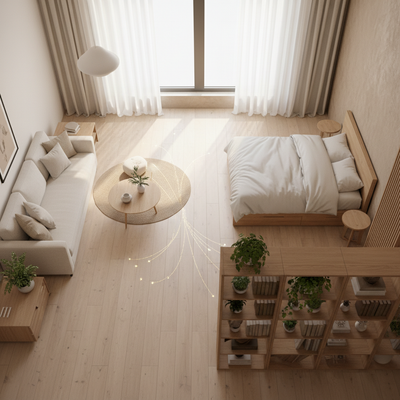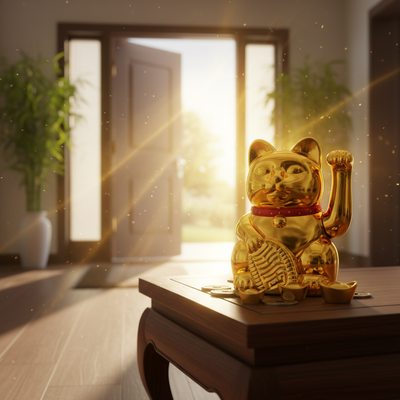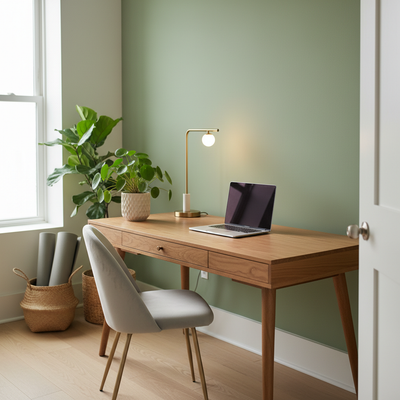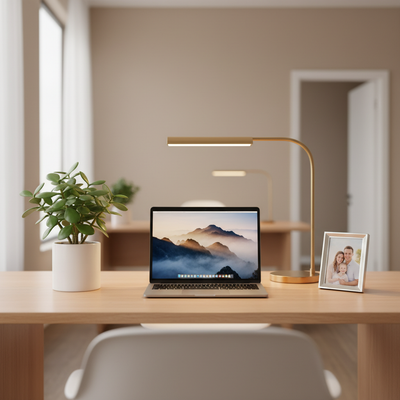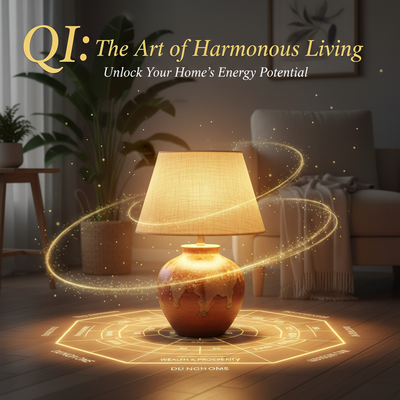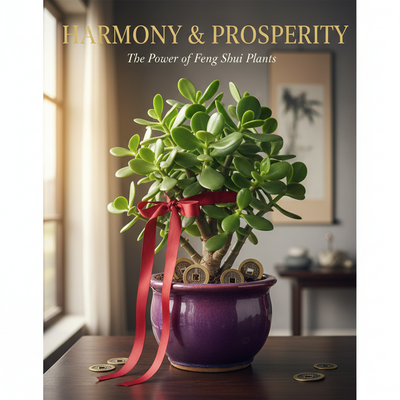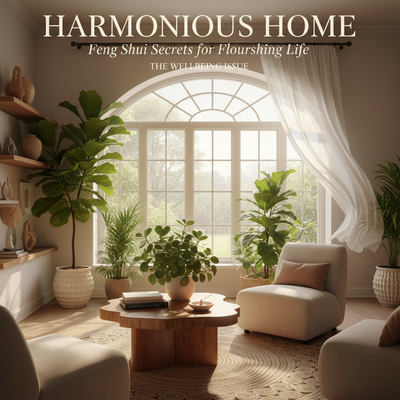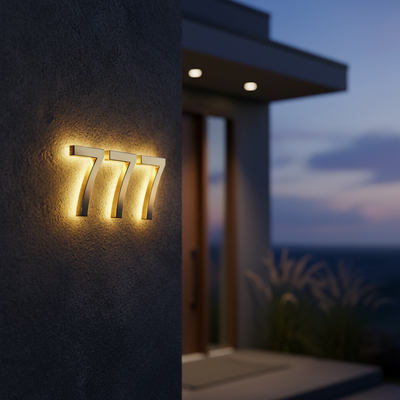That corner of your basement with the treadmill. The extra room that's become a storage space for yoga mats and forgotten weights. We've all had a workout space that feels more tiring than energizing. You know the feeling: you walk in, and your excitement instantly disappears. The problem often isn't your self-control; it's the energy of the room itself.
This is where Feng Shui, the ancient practice of arranging spaces to improve energy flow, offers a powerful and useful solution. By carefully using color, we can transform a boring room into a high-energy space that actively helps you reach your fitness goals. The right feng shui colors for a workout room can actually change how you feel and perform.
In this guide, we will go beyond basic advice. We'll show you how to use the power of color to create a workout space that increases your motivation, improves your focus, and helps you get better results. We'll explore the main ideas about energy, match specific colors to your unique fitness goals, identify which colors to use carefully, and give you a step-by-step plan to make it all happen.
The Foundation of Color

To use color effectively, we first need to understand its role in Feng Shui. Color is not just decoration; it is a form of energy, a visual language that speaks to our subconscious and influences the energetic quality of a space.
Understanding Life Force Energy
At the heart of Feng Shui is the concept of Qi (pronounced "chee"), which means "life force energy." Qi is the vital energy that flows through everything, including our bodies and our homes. The goal in any space, especially a workout room, is to create vibrant, flowing, and uplifting Qi. Stuck or low Qi leads to feelings of tiredness and putting things off, while strong, positive Qi promotes energy, strength, and action. The colors you choose are one of the most direct ways to influence the Qi of your fitness area.
The Balance of Yin/Yang
All Qi is made up of two opposing yet complementary forces: Yin and Yang. Understanding this balance is important for designing a functional workout room.
- Yang energy is active, expansive, bright, loud, and masculine. It is the energy of movement, power, and the sun.
- Yin energy is passive, contractive, dark, quiet, and feminine. It is the energy of rest, recovery, and quiet thinking.
A workout room, by its very nature, should be a mostly Yang space. We want to create the active, powerful energy that fuels a great workout. However, a space that is 100% Yang can lead to burnout, stress, or even injury. A small, intentional touch of Yin provides the necessary balance for focus, grounding, and post-workout recovery. Think of it as the cool-down after an intense sprint.
| Yang Characteristics (Active) | Yin Characteristics (Passive) |
|---|---|
| Bright, warm colors | Dark, cool colors |
| Loud sounds, upbeat music | Quiet, silence |
| Hard, smooth surfaces | Soft, plush textures |
| Bright, direct lighting | Dim, ambient lighting |
| Upward, outward movement | Downward, inward energy |
Match Color to Fitness Goal
Basic advice to "paint your gym red" falls short because it ignores your specific needs. A better approach uses the Feng Shui Five Elements system. This framework connects colors to specific types of energy, allowing you to create a space that is perfectly aligned with your personal fitness goals.
The Five Elements Power
The Five Elements—Wood, Fire, Earth, Metal, and Water—are different expressions of Qi. Each element controls certain qualities, emotions, and types of energy, and each is connected with a specific color palette. By selecting the colors of the element that matches your workout style, you can supercharge your space with the exact energy you need.
The Fire Element: Cardio/HIIT
The Fire element is the peak of Yang energy. It represents passion, expansion, peak performance, and maximum energy output. Its energy is explosive and upward-moving, making it the perfect choice for high-intensity workouts.
- Energy: Passion, peak performance, high energy, expansion.
- Colors: All shades of red, from bold scarlet to deep burgundy, as well as vibrant oranges and rich purples.
- Best For: High-Intensity Interval Training (HIIT), spinning, running, boxing, and any intense cardio session where you need to push your limits.
- How it Works: These colors are mentally stimulating. Color psychology research has shown that exposure to the color red can increase heart rate and produce a burst of physical strength and speed. It signals your brain and body that it's time to perform at your peak.
- Application Tip: Fire is incredibly powerful, so a little goes a long way. Use it as an accent wall, ideally the one you face during your most intense activity. Painting an entire room bright red can be too stimulating and lead to stress or burnout.
The Wood Element: Growth/Flexibility
The Wood element is the energy of growth, vitality, and flexibility. It is rooted in nature and represents the power of new beginnings and steady progress. Its upward and outward energy supports both physical and personal development.
- Energy: Growth, vitality, flexibility, healing, new beginnings.
- Colors: All shades of green, from lively lime to deep forest green, and rich, grounding browns.
- Best For: Yoga, Pilates, barre, stretching, or for anyone starting a new fitness journey.
- How it Works: Green colors connect us to the healing, rejuvenating energy of nature. They promote a sense of balance and renewal, which is ideal for practices that focus on the mind-body connection. Brown provides a stable, grounding foundation for this growth. This palette encourages you to be flexible, to root down, and to rise up stronger.
The Metal Element: Precision/Endurance
The Metal element represents strength, discipline, structure, and precision. Its energy is crisp, focused, and inward-gathering, helping to eliminate distractions and enhance concentration. It is the element of completion and refinement.
- Energy: Strength, discipline, precision, focus, completion.
- Colors: Crisp whites, all shades of gray, and metallic finishes like silver, gold, and chrome.
- Best For: Weightlifting, strength training, calisthenics, martial arts, or any workout that requires careful form and mental focus.
- How it Works: The clean, uncluttered look of the Metal element creates an environment free from distraction. White and light gray open up the space and promote mental clarity, while metallic accents add a quality of resilience and strength. This palette helps you focus on the details of each movement, ensuring proper form and maximizing results.
| Element | Colors | Energy & Focus | Ideal For Workouts Like... |
|---|---|---|---|
| Fire | Reds, Oranges, Purples | Peak Energy, Passion, Stamina | HIIT, Cardio, Spinning |
| Wood | Greens, Browns | Growth, Flexibility, Vitality | Yoga, Pilates, Stretching |
| Metal | Whites, Grays, Metallics | Precision, Strength, Focus | Weightlifting, Martial Arts |
Colors to Use with Caution
In Feng Shui, no color is naturally "bad." However, certain colors carry an energy that is less supportive of an active, Yang-dominant space. The key is to use them with intention and in the right amount.
-
Overly Calming Blues (Water Element)
While light blue is often connected with peace and calm, this strong Yin energy is counterproductive in a room dedicated to physical activity. It can lower your heart rate and your motivation, making it feel harder to get started. A smarter way to use it is to designate a small, separate cool-down or meditation corner with a light blue rug or cushion to aid in post-workout recovery. -
Dominant Black or Dark Gray (Water Element)
Large areas of black or charcoal gray can make a space feel heavy, restricting, and energetically draining. The Water element energy, when used too much, can absorb light and Qi, zapping your vitality before you even begin. While a sleek, all-black gym might look stylish, it can work against your goals. A smarter way to use it is as a grounding accent. Think black rubber flooring, a single piece of black equipment, or a thin black frame on a mirror, all set against brighter, more activating wall colors. -
Muted Earth Tones (Earth Element)

Colors like beige, sand, taupe, and terracotta are wonderful for creating a sense of stability and nurturing—the core of the Earth element. However, this energy can be too passive and stable for a workout room. It encourages you to be still and rest, which is the opposite of your goal during a workout. These are the colors of a living room or bedroom, not a power zone. A smarter way to use them is in a nearby lounge area where you can relax after your session, not in the active space itself.
A Client's Journey: THE QI FLOW
Theory is valuable, but seeing these principles in action is what truly inspires. We want to share a story that shows the transformative power of a well-designed space, a common challenge we encounter and solve for our clients.
The Unused Basement Gym
A client came to us with a classic problem. They had invested in a treadmill and free weights, setting them up in a corner of their finished basement. The walls were painted a "safe" neutral beige, the lighting was a single overhead fixture, and the space felt disconnected and uninviting. The client confessed, "I know I should use it, but I find any excuse not to go down there. It just feels...draining." The space had stagnant Qi, and it was actively discouraging the very activity it was meant for.
A Personalized Strategy
This is a challenge we at THE QI FLOW team see often. Our approach isn't just about interior design; it's an energy overhaul. We began our consultation not by looking at paint chips, but by asking about the client's primary fitness goals. They were training for their first half-marathon and needed to build both explosive cardio stamina and foundational strength.
Based on this, THE QI FLOW team identified that a strategic blend of two elemental energies was needed. They required the peak performance energy of the Fire element for their running days and the focused, disciplined energy of the Metal element for their strength training sessions. A single-color solution wouldn't be as effective as a dynamic, balanced palette.
The Energized Power Zone
Following our consultation, the transformation began. The beige was the first thing to go.
* We designated a powerful red accent wall (Fire element) directly behind the treadmill. This became the visual focal point, designed to mentally pull the client forward and fuel their runs.
* The other three walls were painted a crisp, light gray (Metal element). This created a clean, bright, and distraction-free backdrop, perfect for enhancing focus during weightlifting.
* Metallic silver accents were introduced through new open-shelf storage for weights and modern, brighter track lighting (Metal element). This not only added to the look but also enhanced the feeling of strength and structure.
The result was a complete energetic shift. The client told us, "It's incredible. I actually feel a jolt of energy just walking into the room now. The red wall makes me want to run faster, and when I'm lifting, the space feels so clean and focused. I haven't missed a workout since." By aligning the room's energy with the client's goals, the space went from being an obstacle to being their greatest training partner.
Beyond the Walls: Layering Color
A truly high-energy room uses color in multiple layers. Paint is the foundation, but every object you bring into the space contributes to its overall Qi. Thinking beyond the walls allows for a more complete and powerful design, and it's a great way to implement these principles if you're a renter who can't paint.
Energize from the Ground
Your flooring choice is a major energetic statement. Light-colored wood floors are an excellent choice, bringing in the Wood element's energy of growth and flexibility. If you use standard black rubber flooring for protection, see it as a grounding base. Ensure you balance its heavy Yin energy with vibrant Yang colors on the walls and in your accessories.
Equipment as Accent Color
Your fitness tools are a perfect opportunity to inject your power colors. Instead of defaulting to black or gray, make intentional choices.
* If your goal is flexibility, choose a green yoga mat or a set of brown cork blocks (Wood element).
* If you're focused on high-energy cardio, opt for red kettlebells or orange resistance bands (Fire element).
* If precision is your aim, choose sleek white dumbbells or chrome-finished equipment (Metal element).
The Power of Light/Art
Light is a primary source of Yang energy. Replace dim, single-bulb fixtures with bright, clear lighting that mimics natural daylight. Track lighting is excellent as it allows you to direct light where you need it most. Furthermore, choose artwork that reinforces your intention. A dynamic abstract piece with splashes of red or orange can amplify Fire energy, while a beautiful landscape photograph can enhance the Wood element's connection to nature.
Bringing Life with Plants
Plants are the ultimate expression of the Wood element, representing life, growth, and vitality. They purify the air and constantly introduce fresh Qi into your space. Even one or two well-placed plants can make a significant difference. Choose hardy, easy-to-care-for options like a snake plant, ZZ plant, or pothos to add a touch of living energy.
Your 5-Step Action Plan
Feeling inspired? Here is a simple, five-step plan to translate this knowledge into a workout room that actively supports you.
-
Step 1: Define Your Primary Workout Intention
What is the main feeling or result you want from your workouts? Is it the explosive power of high-energy cardio? The focused strength of weight training? Or the flexible flow of yoga? Be specific about your number one goal. -
Step 2: Choose Your Dominant Element & Color
Refer back to the Five Elements guide. Select the element and its associated color palette that best aligns with the intention you defined in Step 1. This will be the main energetic theme of your space. -
Step 3: Create a Balanced Scheme
Use the classic 60-30-10 design rule for a harmonious look. Your dominant color (often a neutral from the Metal element like white or gray) should cover about 60% of the space (most walls). Your secondary color (perhaps a Wood element green) can be about 30% (an accent wall or large rug). Your most powerful accent color (like a Fire element red) should be about 10% (on equipment, art, or a small decor piece). -
Step 4: Layer Colors Beyond Paint
Remember that the walls are just the beginning. Intentionally select the colors of your yoga mat, weights, towels, art, and storage. Every piece is an opportunity to reinforce your chosen energy. -
Step 5: Assess and Feel the Qi
Once your changes are made, the real test begins. Do a workout in your new space. How do you feel? Notice any shifts in your energy, motivation, or focus. Feng Shui is ultimately an experiential practice. The goal is to create a space that not only looks good but feels empowering.
A New Energy for Your Fitness
Your workout room should be more than just a place to sweat; it should be a sanctuary that fuels your ambition and supports your well-being. By moving beyond random color choices and embracing the intentional energy of Feng Shui, you can create a powerful alliance between your environment and your body.
Choosing the right feng shui colors for workout room is about aligning your space with your personal goals. Whether you need the fiery passion of red, the flexible vitality of green, or the focused precision of white, the perfect palette is waiting to unlock your potential. Take the first step today and build a space that gives back as much energy as you put into it.
